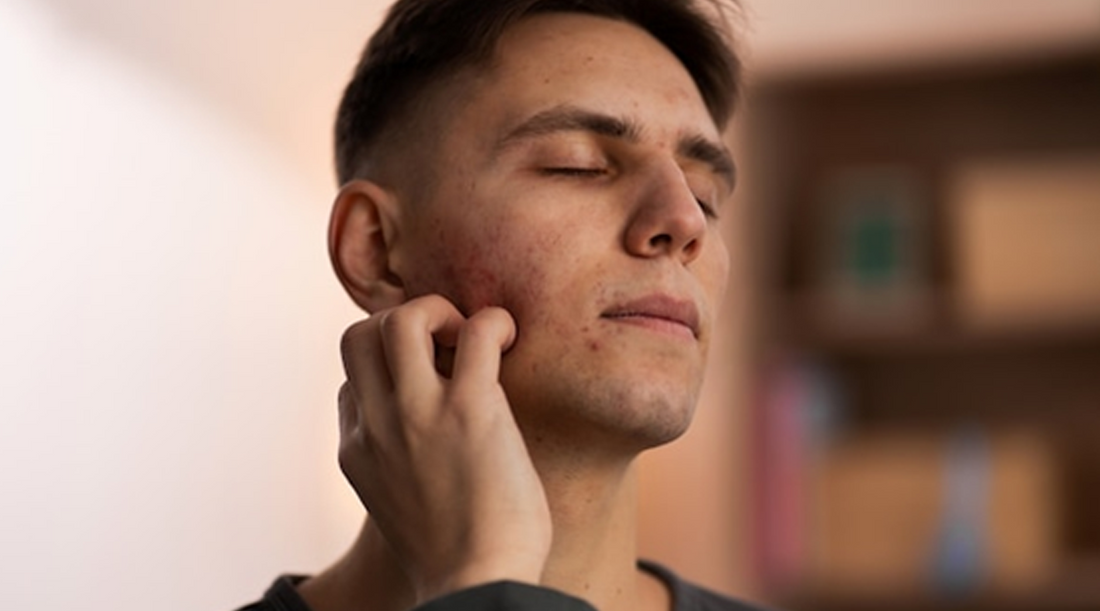Acne is a common skin condition that affects both men and women, but the scars it leaves behind can be particularly troublesome for men. Post-acne scarring can lead to self-consciousness and low self-esteem, making it important to address and treat these scars effectively. In this comprehensive guide, we will explore different treatment options, tips, and preventive measures specifically tailored for men dealing with post-acne scarring.
Understanding Post-Acne Scarring
Post-acne scarring occurs when acne lesions heal and leave behind scars on the skin. There are two main types of post-acne scars: atrophic and hypertrophic. Atrophic scars are depressions or indentations in the skin, while hypertrophic scars are raised and thickened areas of skin.
Atrophic Scars
Atrophic scars are the most common type of post-acne scars in men. They can be further classified into three subtypes: ice pick scars, rolling scars, and boxcar scars. Ice pick scars are deep, narrow scars that resemble puncture wounds. Rolling scars, on the other hand, are broad, shallow depressions that give the skin a wavy appearance. Lastly, boxcar scars are angular, well-defined depressions with steep, vertical sides.
Hypertrophic Scars
Hypertrophic scars are less common in men but can be more challenging to treat. They occur when the body produces excessive collagen during the healing process, resulting in raised scars that protrude above the surface of the skin.
Treatment Options
When it comes to treating post-acne scarring in men, there are several effective options available. The choice of treatment depends on the type and severity of the scars.
Topical Treatments
Topical treatments, such as retinoids, alpha hydroxy acids (AHAs), and beta hydroxy acids (BHAs), can be effective for mild to moderate post-acne scarring. Retinoids, derived from vitamin A, help exfoliate the skin and promote collagen production. AHAs and BHAs work by dissolving the bonds between dead skin cells, aiding in skin exfoliation.
Chemical Peels
Chemical peels involve applying a chemical solution to the skin, which causes the outer layer to peel away. This process helps reduce the appearance of post-acne scarring by stimulating collagen production and promoting new skin cell growth.
Microneedling
Microneedling is a technique that uses a small device with tiny needles to create thousands of microscopic puncture wounds on the skin. This process stimulates the body's natural healing response and can help reduce the appearance of post-acne scarring.
Laser Treatments
Laser treatments utilize high-energy light to remove the outer layer of the skin. This procedure stimulates collagen production and encourages the growth of new skin cells, effectively reducing the appearance of both atrophic and hypertrophic acne scars.
Tips for Men Dealing with Post-Acne Scarring
In addition to medical treatments, there are several tips that men can follow to help minimize the appearance of post-acne scarring and promote healthier skin.
Wear Sunscreen
Protecting the skin from sun exposure is crucial for preventing post-acne scars from becoming darker and more noticeable. It is essential to apply sunscreen with a minimum SPF of 30 to shield the skin from further damage, including the increased risk of skin cancer.
Avoid Picking at Scabs
Picking at scabs prolongs the healing process and increases the likelihood of scarring. It is crucial to resist the urge to pick at scabs and allow them to heal naturally.
Use Gentle Skin Care Products
Harsh skincare products can irritate the skin and exacerbate post-acne scarring. Opt for gentle skin care products that are fragrance-free and free from other potential irritants.
Massage Scars
Massaging post-acne scars can help break up scar tissue and promote healing. Use a gentle touch and avoid applying excessive pressure to prevent further damage to the skin.
Maintain a Healthy Diet
A balanced diet rich in fruits, vegetables, and lean proteins can contribute to overall skin health. Proper nutrition supports the body's natural healing processes and encourages the growth of healthy skin cells.
Stay Hydrated
Drinking an adequate amount of water is essential for maintaining hydrated and healthy skin. Proper hydration helps the skin heal and regenerate more effectively.
Manage Stress Levels
High stress levels can worsen acne and delay the healing process of scars. Engaging in stress-reducing activities such as exercise, meditation, or hobbies can help improve overall skin health.
Consult a Dermatologist
If over-the-counter treatments and home remedies do not yield satisfactory results, it is advisable to seek professional help from a dermatologist. A dermatologist can provide personalized advice and recommend advanced treatments based on your specific skin condition.
Conclusion
Post-acne scarring can be an ongoing concern for men, impacting self-esteem and confidence. However, with the right treatment options and proactive measures, the appearance of these scars can be minimized. By following the tips outlined in this guide, men can take steps towards healing and preventing post-acne scarring, promoting healthier, more vibrant skin. Remember to consult with a dermatologist for a personalized treatment plan that suits your specific needs and skin condition.
